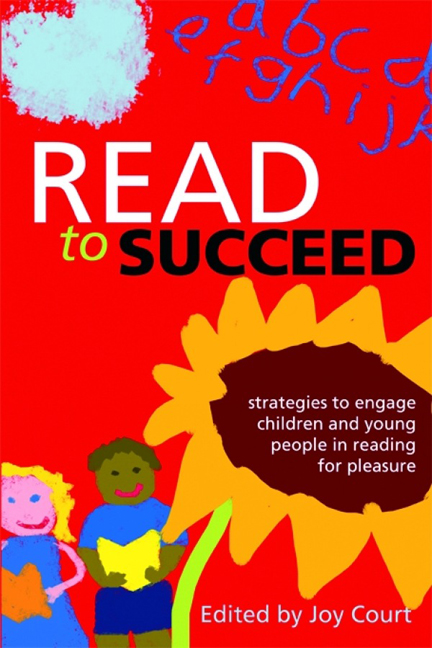Book contents
- Frontmatter
- Dedication
- Contents
- Foreword
- Contributors
- Introduction
- 1 It's never too soon to start
- 2 How children begin to read
- 3 Creating young readers: teachers and librarians at work
- 4 The six dimensions of the ‘honeycomb’ model, and its implications for literacy, libraries and literature in New Zealand
- 5 The Summer Reading Challenge in libraries: a continuing success
- 6 Stockport does Book Idol! A case study linking libraries and schools to inspire reading for pleasure
- 7 There and back again: restoring reading to the classroom
- 8 Promoting excellence: shadowing the CILIP Carnegie and Kate Greenaway Medals
- 9 Choice and motivation: local book awards
- 10 The sport of reading
- 11 Adventures in the book trade: libraries and partnerships
- 12 The hard-to-reach reader in the 21st century
- 13 Creative reading and insideadog.com.au
- Index
- Miscellaneous Endmatter
- Miscellaneous Endmatter
- misc-endmatter
Foreword
Published online by Cambridge University Press: 08 June 2018
- Frontmatter
- Dedication
- Contents
- Foreword
- Contributors
- Introduction
- 1 It's never too soon to start
- 2 How children begin to read
- 3 Creating young readers: teachers and librarians at work
- 4 The six dimensions of the ‘honeycomb’ model, and its implications for literacy, libraries and literature in New Zealand
- 5 The Summer Reading Challenge in libraries: a continuing success
- 6 Stockport does Book Idol! A case study linking libraries and schools to inspire reading for pleasure
- 7 There and back again: restoring reading to the classroom
- 8 Promoting excellence: shadowing the CILIP Carnegie and Kate Greenaway Medals
- 9 Choice and motivation: local book awards
- 10 The sport of reading
- 11 Adventures in the book trade: libraries and partnerships
- 12 The hard-to-reach reader in the 21st century
- 13 Creative reading and insideadog.com.au
- Index
- Miscellaneous Endmatter
- Miscellaneous Endmatter
- misc-endmatter
Summary
Ask anybody who works with children or who cares about the future of young people and they will agree on one thing: reading is the most basic of basics. The child who reads is a successful child: more likely to succeed academically; more likely to succeed socially; and more likely to be inquisitive about the world around them, maybe even to feel empowered to try to change it for the better. This is not just my opinion. It is a judgement supported by a body as influential as the Organisation for Economic Cooperation and Development (OECD).
When you read often, when it is as effortless and integral to your being as eating, drinking, sleeping and breathing, you are able to empathize, to access and order information, to interpret and explore the world around you.
I know this from personal experience. My father was a factory worker. My mother was a shop assistant. I got the reading habit at Crewe Library as an eight year-old and I have devoured novels, biographies, autobiographies, histories, plays, poetry, periodicals, newspapers, magazines, comics and quiz books ever since. I was the first person in my family to go to university. I liked the experience so much that I attended three of them! I became a teacher and later an award-winning author.
When I visit schools and libraries to talk about my books young people invariably ask who inspired me. I always give the same reply. The books and the authors who wrote them inspired me. That is only half the explanation, however. Without the guidance of many dedicated librarians I would not have gained access to the inspirational power of the written word. To paraphrase the words of the Manic Street Preachers, libraries gave me power – and that also means the librarians that staff them. A library without a librarian is … a room. You might imagine therefore that there would be no dispute about the central place of reading in society and in the school curriculum. Sadly, this is not true. School and public libraries and school library services are under severe pressure. In difficult economic conditions, they are often at the top of the list for cuts.
- Type
- Chapter
- Information
- Read to SucceedStrategies to Engage Children and Young People in Reading for Pleasure, pp. ix - xPublisher: FacetPrint publication year: 2011

